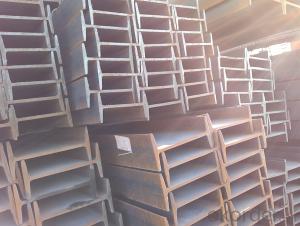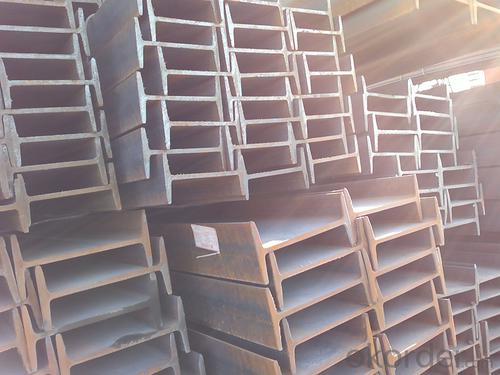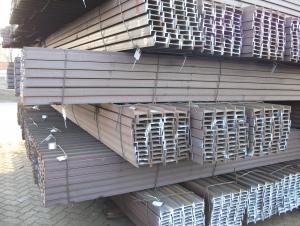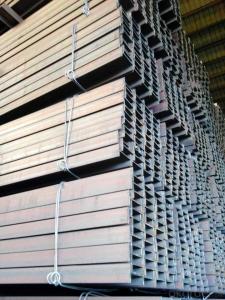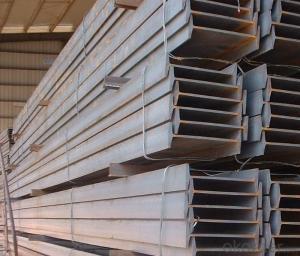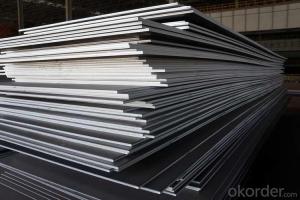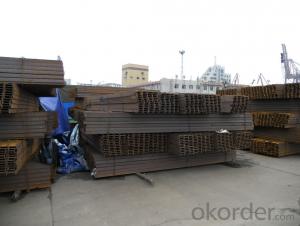Steel Hot Rolled IPEAA Beam High Quality
- Loading Port:
- China Main Port
- Payment Terms:
- TT or LC
- Min Order Qty:
- -
- Supply Capability:
- -
OKorder Service Pledge
OKorder Financial Service
You Might Also Like
Product Description:
OKorder is offering IPEAA Beam at great prices with worldwide shipping. Our supplier is a world-class manufacturer of steel, with our products utilized the world over. OKorder annually supplies products to European, North American and Asian markets. We provide quotations within 24 hours of receiving an inquiry and guarantee competitive prices.
Product Applications:
1. structure construction and electronic tower building construction
2. bridge, trestle, autos, brackets, machinery
3.It is widely used in various building structures and engineering structures such as roof beams, bridges, transmission towers, hoisting machinery and transport machinery, ships, industrial furnaces, reaction tower, container frame and warehouse etc.
.
Product Advantages:
OKorder's IPEAA Beam are durable, strong, and resist corrosion.
Main Product Features:
· Premium quality
· Prompt delivery & seaworthy packing (30 days after receiving deposit)
· Corrosion resistance
· Can be recycled and reused
· Mill test certification
· Professional Service
· Competitive pricing
Product Specifications:
1.Standard: EN10025, GB Standard, ASTM
2.Grade: Q235B, Q345B, SS400, ASTM A36, S235JR, S275JR
Alloy No. | Grade | C | Mn | S | P | Si |
Q235 | B | 0.12%-0.20% | 0.3%-0.7% | <=0.045% | <=0.045% | <=0.3% |
3.Length: 5.8M, 6M, 12M or as the requriements of the customers
4.Sizes: 80mm-200mm
Dimensions | |||||
| h | b | s | t | Mass Kg/m |
IPEAA80 | 80 | 46 | 3.20 | 4.20 | 4.95 |
IPEAA100 | 100 | 55 | 3.60 | 4.50 | 6.72 |
IPEAA120 | 120 | 64 | 3.80 | 4.80 | 8.36 |
IPEAA140 | 140 | 73 | 3.80 | 5.20 | 10.05 |
IPEAA160 | 160 | 82 | 4.00 | 5.60 | 12.31 |
IPEAA180 | 180 | 91 | 4.30 | 6.50 | 15.40 |
IPEAA200 | 200 | 100 | 4.50 | 6.70 | 17.95 |
Package & Delivery Terms of IPEAA Beam
1. Packing: it is nude packed in bundles by steel wire rod
2. Bundle weight: not more than 3.5MT for bulk vessel; less than 3 MT for container load
3. Marks:
Color marking: There will be color marking on both end of the bundle for the cargo delivered by bulk vessel. That makes it easily to distinguish at the destination port.
Tag mark: there will be tag mark tied up on the bundles. The information usually including supplier logo and name, product name, made in China, shipping marks and other information request by the customer.
If loading by container the marking is not needed, but we will prepare it as customer request.
4. All the IPEAA Beams will be delivered to the port of Tianjin within 45 days after receiving the Original L/C at sight or the advance payment by T/T.
5. Transportation: the goods are delivered by truck from mill to loading port, the maximum quantity can be loaded is around 40MTs by each truck. If the order quantity cannot reach the full truck loaded, the transportation cost per ton will be little higher than full load.
FAQ:
Q1: Why buy Materials & Equipment from OKorder.com?
A1: All products offered byOKorder.com are carefully selected from China's most reliable manufacturing enterprises. Through its ISO certifications, OKorder.com adheres to the highest standards and a commitment to supply chain safety and customer satisfaction.
Q2: How do we guarantee the quality of our products?
A2: We have established an advanced quality management system which conducts strict quality tests at every step, from raw materials to the final product. At the same time, we provide extensive follow-up service assurances as required.
Q3: What makes stainless steel stainless?
A3: Stainless steel must contain at least 10.5 % chromium. It is this element that reacts with the oxygen in the air to form a complex chrome-oxide surface layer that is invisible but strong enough to prevent further oxygen from "staining" (rusting) the surface. Higher levels of chromium and the addition of other alloying elements such as nickel and molybdenum enhance this surface layer and improve the corrosion resistance of the stainless material.
Images:
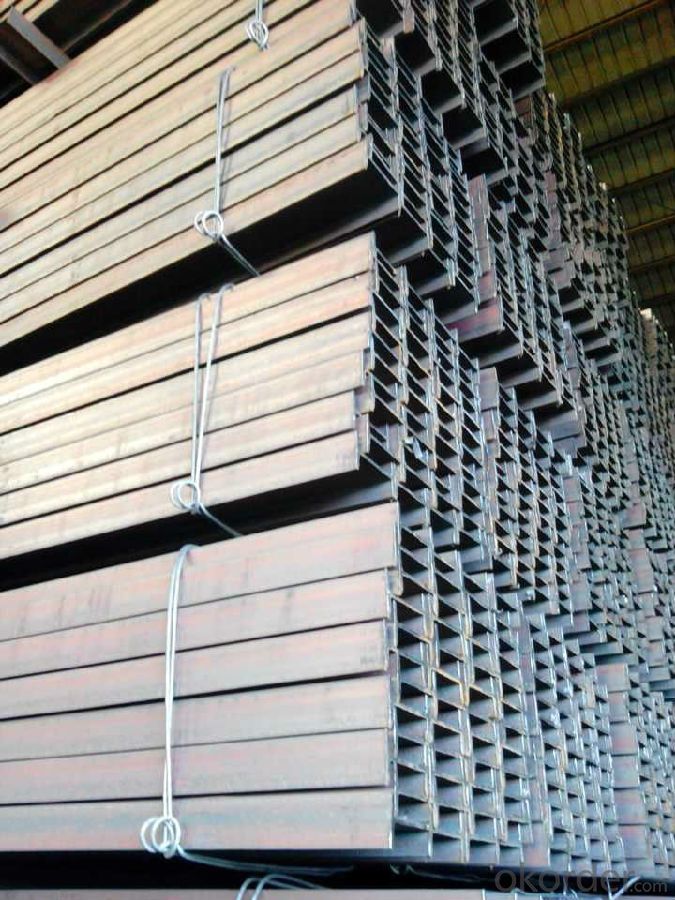
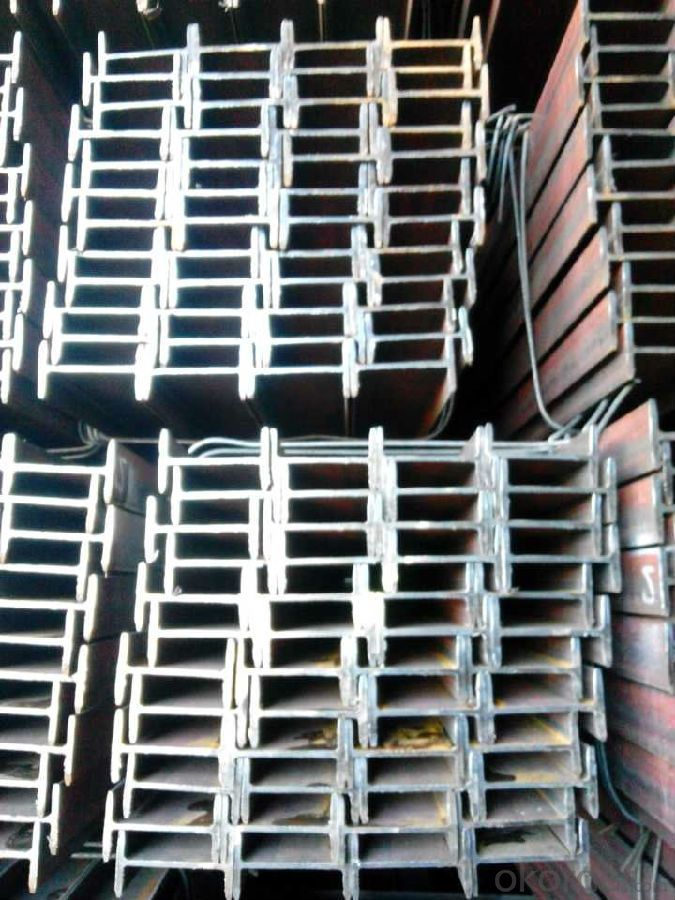
- Q: Can steel angles be used in marine applications?
- Yes, steel angles can be used in marine applications. Steel angles are commonly used in the construction of ships, offshore platforms, and other marine structures due to their high strength and durability. They provide structural support and help distribute the weight and stress of the marine environment. Steel angles are resistant to corrosion, especially when coated with protective coatings or galvanized. However, it is important to select the appropriate grade of steel angle that is specifically designed for marine applications to ensure optimal performance and longevity in harsh saltwater environments.
- Q: Are there any special considerations when handling or installing steel angles?
- Yes, there are several special considerations when handling or installing steel angles. Firstly, it is important to ensure that the angles are properly stored and protected from corrosion. They should be kept in a dry and well-ventilated area, away from moisture and chemicals. Secondly, during installation, it is crucial to carefully measure and mark the location of the angles to ensure accurate placement. Additionally, proper safety precautions should be taken, such as wearing protective gloves and goggles, as steel angles can be heavy and have sharp edges. Lastly, it is important to follow the manufacturer's guidelines and recommendations for installation to ensure structural integrity and safety.
- Q: How do you prevent warping of steel angles during fabrication?
- To prevent warping of steel angles during fabrication, there are several key measures that can be taken: 1. Proper material handling: Steel angles should be stored, transported, and handled carefully to avoid any bending or warping. They should be stored on a flat surface or rack, ensuring that they are not subjected to excessive pressure or force that could cause deformation. 2. Controlled heating and cooling: During fabrication processes that involve heat, such as welding or cutting, it is crucial to control the temperature and minimize the heat input. Rapid heating or cooling can lead to thermal expansion or contraction, causing warping. Proper preheating and controlled cooling methods, such as using heat sinks or heat-treating processes, should be employed to mitigate the risk of warping. 3. Proper welding techniques: Welding is a critical step in steel fabrication, and improper techniques can contribute to warping. It is essential to use appropriate welding parameters, such as correct amperage, voltage, and travel speed, to ensure a balanced heat distribution across the workpiece. Additionally, employing welding fixtures, clamps, or jigs can help hold the steel angles in place during welding, minimizing distortion. 4. Minimize stress concentration: Sharp corners or abrupt changes in geometry can create stress concentration points, which are prone to warping. It is advisable to avoid sharp corners by using radii or chamfers, which distribute stress more evenly. Furthermore, proper alignment and fit-up of the steel angles before welding can reduce residual stress and potential warping. 5. Post-welding treatments: After welding, it is essential to relieve residual stresses in the steel angles. This can be achieved through post-weld heat treatment or stress-relieving processes, such as annealing or normalizing. These treatments help to reduce internal stresses and minimize the risk of warping. Overall, a combination of proper material handling, controlled heating and cooling, appropriate welding techniques, stress minimization, and post-welding treatments can significantly contribute to preventing warping during the fabrication of steel angles.
- Q: Can steel angles be used for overhead support in industrial settings?
- Yes, steel angles can be used for overhead support in industrial settings. Steel angles are versatile and strong structural components that can provide the necessary support for various overhead applications. They are commonly used in the construction industry for their ability to bear heavy loads and withstand high levels of stress. Steel angles are often employed in the construction of frameworks, trusses, and supports for overhead conveyors, cranes, piping systems, and other industrial equipment. Their durability, resistance to corrosion, and ability to be easily welded or bolted make them an ideal choice for providing overhead support in industrial settings.
- Q: What does "L125*8" stand for in steel structures?
- Equal angle steel, width 125, wall thickness 8
- Q: What are the common methods of surface preparation for steel angles?
- The common methods of surface preparation for steel angles include grinding, sandblasting, and chemical cleaning. Grinding is a mechanical method where the surface of the steel angle is smoothed and leveled using an abrasive wheel or disc. This method is effective in removing rust, scale, and other surface imperfections. It is commonly used for small-scale projects or when a smooth surface finish is not critical. Sandblasting, also known as abrasive blasting, involves propelling small particles at high speeds onto the surface of the steel angle. This method is highly effective in removing mill scale, rust, paint, and other contaminants. Sandblasting provides a roughened surface that promotes better adhesion of coatings or paints. It is commonly used in large-scale industrial projects where a high-quality surface finish is required. Chemical cleaning involves using chemical solutions to remove contaminants from the surface of the steel angle. This method is effective in removing rust, oil, grease, and other organic materials. Chemical cleaning can be done through various techniques such as immersion or brush application. It is commonly used when sandblasting or grinding may not be feasible or practical. In addition to these methods, other surface preparation techniques may include power tool cleaning, flame cleaning, or a combination of methods depending on the specific requirements of the project. It is important to choose the appropriate method based on the condition of the steel angle, the desired surface finish, and the intended application of the steel angle.
- Q: Can steel angles be used in historical or heritage restoration projects?
- Historical or heritage restoration projects can indeed utilize steel angles. With their versatility, steel angles can serve various purposes, including structural support, reinforcing, and decorative detailing. By fabricating them to match the original design and materials of historical structures, seamless integration with the existing architecture can be achieved. Strength, durability, and resistance to corrosion are among the advantages that steel angles offer, making them particularly valuable in restoration projects that aim to preserve the historical integrity of the structure. Moreover, steel angles can be tailored and manufactured to meet specific project needs, making them suitable for a wide array of restoration applications.
- Q: What are the different standards for steel angles?
- There are several different standards for steel angles, which are commonly used in construction and industrial applications. One of the most widely recognized standards is the American Society for Testing and Materials (ASTM) standard. ASTM A36 is a common grade for steel angles and specifies the chemical composition, mechanical properties, and tolerances for these structural shapes. It is commonly used for general structural purposes and is available in various sizes and lengths. Another prominent standard is the European standard, known as EN 10025. This standard includes several grades of steel angles, such as S235, S275, and S355, which correspond to different yield strengths. EN 10025 steel angles are widely used in construction, machinery, and engineering industries across Europe. In addition to these standards, there are also country-specific standards, such as the Japanese Industrial Standards (JIS) and the British Standards (BS). JIS G3101 is a well-known standard in Japan, which specifies the hot-rolled steel angles for general structures. BS EN 10056 is a British standard that provides specifications for steel angles used in construction. Furthermore, there are specialized standards for specific applications, such as marine-grade steel angles that are resistant to corrosion in saltwater environments. These standards, like ASTM A588, provide additional requirements for chemical composition and mechanical properties to ensure the steel angles' durability in harsh conditions. Overall, the different standards for steel angles ensure that these structural shapes meet specific requirements for strength, durability, and compatibility with various construction and industrial applications. It is crucial to refer to the appropriate standard when selecting steel angles to ensure they meet the necessary specifications for the intended use.
- Q: What are the different methods of surface preparation for steel angles before painting?
- There are several methods of surface preparation for steel angles before painting. The choice of method depends on the condition of the steel surface and the desired level of paint adhesion and durability. One common method is abrasive blasting, also known as sandblasting. This involves propelling abrasive particles against the steel surface to remove rust, mill scale, and other contaminants. Abrasive blasting not only cleans the surface but also creates a rough profile, which improves the adhesion of the paint. Chemical cleaning is another method used to prepare steel angles for painting. It involves the use of chemical solutions or solvents to remove grease, oil, and other organic contaminants. This method is particularly useful for removing stubborn contaminants that cannot be removed by abrasive blasting alone. Mechanical cleaning methods, such as wire brushing or grinding, can be used to remove loose rust, scale, and old paint. These methods are suitable for smaller areas or localized rust spots. In some cases, power tool cleaning may be sufficient. This involves using power tools such as grinders, sanders, or wire brushes to clean the steel surface. However, it is important to ensure that these tools do not create a polished or smooth surface, as this can reduce paint adhesion. After the surface has been cleaned, it is important to remove any residual contaminants by using a solvent wipe or a clean cloth soaked in a suitable solvent. This step ensures that the surface is free from any remaining contaminants that could affect the paint adhesion. Finally, the steel angles should be primed before painting. A primer provides additional corrosion protection and enhances the adhesion of the topcoat. The choice of primer depends on the specific requirements of the project, such as exposure to harsh weather conditions or chemical exposure. Overall, the different methods of surface preparation for steel angles before painting include abrasive blasting, chemical cleaning, mechanical cleaning, power tool cleaning, solvent wiping, and priming. Selecting the appropriate method ensures that the paint adheres well to the steel surface and provides long-lasting protection against corrosion.
- Q: What is the maximum load a steel angle can support?
- The maximum load a steel angle can support depends on various factors, such as the dimensions of the angle, the type and grade of steel used, and the method of support. However, in general, steel angles are known for their high strength and load-bearing capacity. They are commonly used in construction and structural applications to provide support and stability to various structures. To determine the maximum load a specific steel angle can support, it is necessary to consult engineering tables or reference materials that provide load capacity data for different steel angles. These resources consider factors such as the angle's dimensions (length, width, and thickness), the type of steel (such as mild steel or high-strength steel), and the method of support (such as cantilever or simply supported). It is important to note that the maximum load a steel angle can support is typically determined by conducting tests in a controlled environment to ensure safety and reliability. These tests involve applying progressively increasing loads to the angle until it reaches its maximum load-bearing capacity or failure point. The results of these tests are used to establish load capacity guidelines for engineers and builders. Therefore, without specific information about the dimensions, type of steel, and method of support, it is not possible to provide a precise maximum load value for a steel angle. It is recommended to consult relevant engineering references, structural engineers, or manufacturers to obtain accurate load capacity information for a specific steel angle.
Send your message to us
Steel Hot Rolled IPEAA Beam High Quality
- Loading Port:
- China Main Port
- Payment Terms:
- TT or LC
- Min Order Qty:
- -
- Supply Capability:
- -
OKorder Service Pledge
OKorder Financial Service
Similar products
Hot products
Hot Searches
Related keywords
